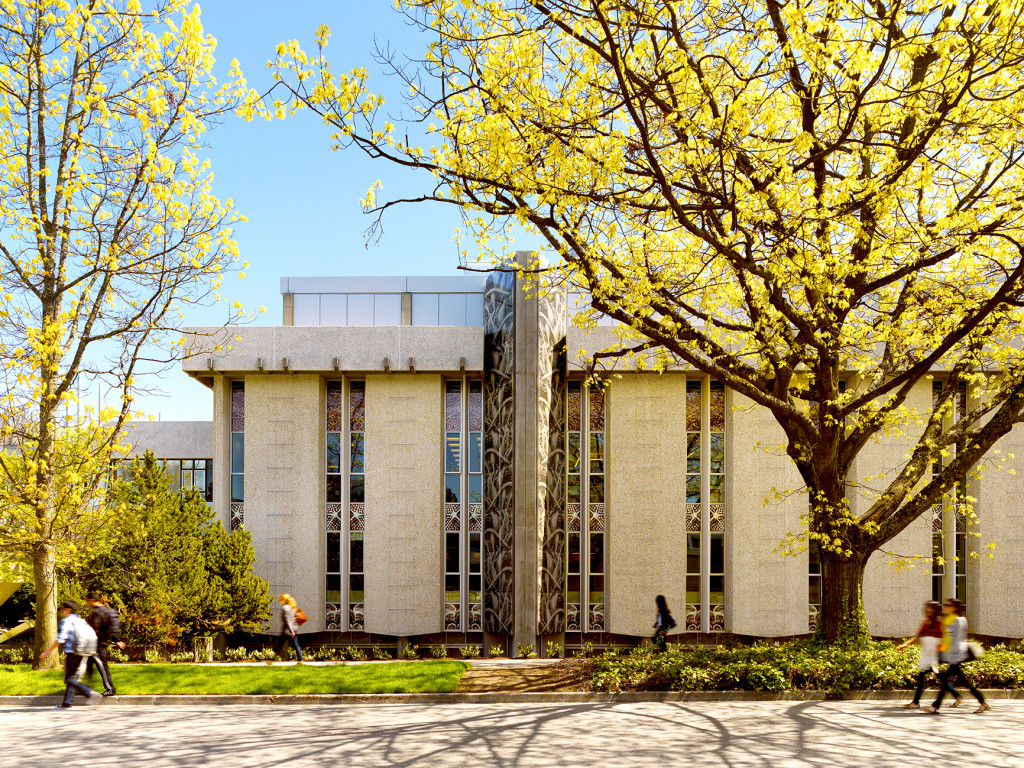Project Description
In 2011, the Biological Sciences Complex at UBC underwent a seismic upgrade and a renewal of its building systems, partitions and finishes in the South and West wings. Spanning 16,000sm, the renovation provides new state-of-the art research and teaching facilities, including laboratories, aquaria, informal research spaces, classrooms, seminar rooms and gathering spaces for the departments of Botany and Zoology.
The project is part of Phase Two of UBC Renew, the University’s highly successful, multi-stage plan to renovate and refurbish – rather than demolish and rebuild – aging buildings on its Vancouver campus. By rehabilitating old structures, substantial reductions in raw materials, energy inputs, and pollutants are achieved – more than any replacement ‘green’ building could accomplish. The UBC Renew requirement for LEED Gold certification was very challenging to achieve due to the intensive demands associated with laboratory buildings.
The all-new mechanical systems include an innovative energy-scavenging hydronic heating and cooling system, variable flow lab exhaust, natural ventilation for private offices, and an aquatic life-support system. HVAC systems for laboratories typically demand 100% outside air supply to preserve a safe and healthy indoor environment. The existing standard for labs at UBC is 10 air changes per hour. Computational fluid dynamic modelling demonstrated that a safe environment could be maintained with 8 air changes per hour by an innovative cross-lab air delivery design that would result in significant energy savings.
The new mechanical systems were designed to connect to a new campus-wide low temperature district hot water system that is currently under construction. The system will eventually replace the campus steam system. Once completed, existing building systems will be switched over to run off the new district hot water system, further reducing dependence on fossil fuels.
Electrical services include emergency power systems to protect ongoing research, state-of-the-art networking, and an innovative, prototypical demonstration project that incorporates Core Sunlighting Technology, a daylight-harvesting system developed at UBC. The system uses miniature solar-tracking mirrors that collect and funnel sunlight deep inside buildings where it is delivered from light-guides that resemble traditional light fixtures.
Artificial daylighting is based on T5 fluorescent lamps and programmed-start ballasts. L.E.D. downlighting is used in informal meeting spaces and compact fluorescent pot lights are used where aesthetic considerations and higher light levels are required. Lighting is controlled with time-of-day scheduling and occupancy sensor system overrides.
Existing fixed, single-glazed windows were replaced with new, operable, double-glazed windows and existing solid spandrel panels were replaced with clear glazing to increase natural daylighting. Interior walls of offices facing corridors are translucent glass to facilitate transmission of daylight into the building.
The capacity of the existing structure to resist seismic forces was limited so an innovative ductile system of shear walls and seismic buttresses was integrated to resist seismic loads and to shorten the construction schedule by permitting interior work to begin sooner than was typical. To minimize the size of the foundations, vertical soil anchors were incorporated in the footings.
In addition to providing seismic resistance, the seismic buttresses provide articulation and visual interest along Main Mall by means of glass panels printed with botanical and zoological images that signal the uses contained within the complex.
The panels are illuminated at night to add dramatic effect and lighting for passersby. Roof drainage is integrated within the buttresses to divert rainwater runoff into a landscaped botanical bioswale adjacent to majestic mature Oak trees along Main Mall.
The interior, comprised of laboratories, classrooms, faculty and administrative offices, includes increased window area to let in daylight. The corridors incorporate large expanses of translucent glass to allow natural light to pass deep into the interior of the building. The botanical and zoological image patterning used on the exterior seismic buttresses is introduced at the interior of the building in the form of large glass panels that mark and identify the various laboratories throughout the complex. A key component of the program was the creation of informal research lounges to encourage the exchange of ideas between researchers and to facilitate a feeling of community amongst students, faculty and staff. The combination of patterned glass, natural wood panelling, and improved circulation patterns creates a welcoming space that facilitates cross-disciplinary interaction between students and faculty.
The innovative project was a study in the many ways that considerate, collaborative and innovative design can help to preserve the Earth and its living inhabitants – the same goals as the biological science researchers who use the renewed complex.







































